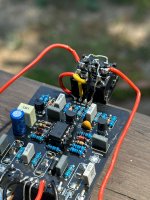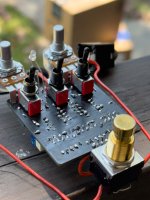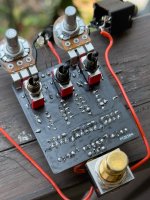diesin1stact
New member
Hello, everyone. I've successfully built 5 or 6 pedals so far but have run into a power problem that I can't diagnose.
This is the Desolate Fuzz. I've swapped out DC jacks, reflowed some solder points that were a little dull and reversed the 2N3904 that is upside down in the photos. Any other ideas to try?
Haven't broken out the multimeter yet but when the pedal is plugged in, I'm getting nothing from the LED and no instrument signal through the pedal.
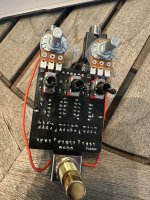

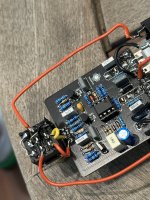
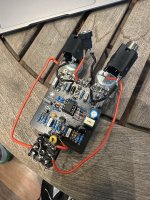
This is the Desolate Fuzz. I've swapped out DC jacks, reflowed some solder points that were a little dull and reversed the 2N3904 that is upside down in the photos. Any other ideas to try?
Haven't broken out the multimeter yet but when the pedal is plugged in, I'm getting nothing from the LED and no instrument signal through the pedal.







